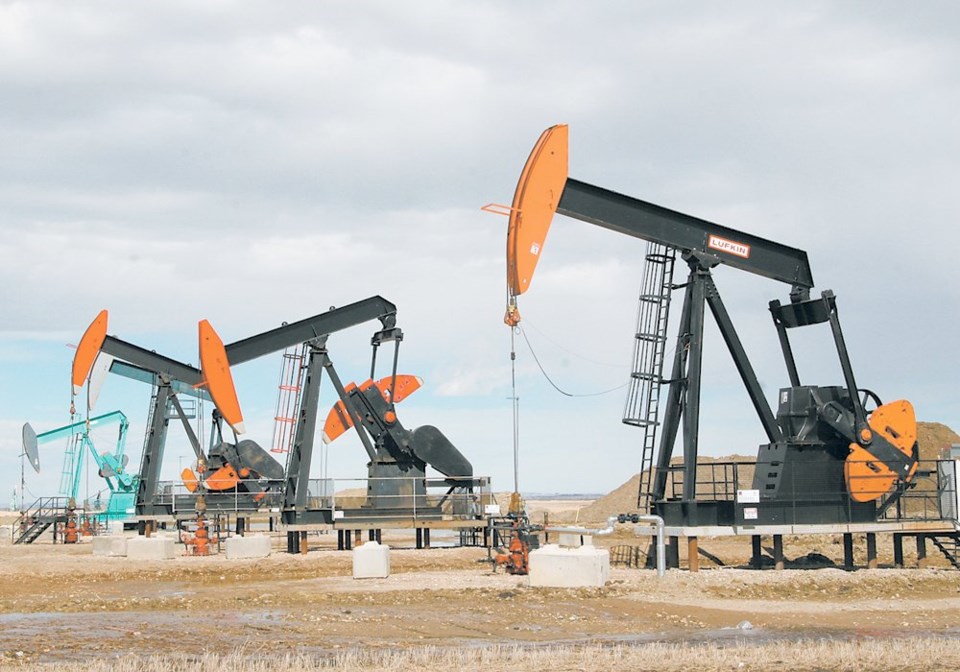WESTERN PRODUCER — Even as North American crude oil futures last week dropped below US$80 per barrel for the first time since January, some analysts argue that a return to $100 is possible in 2023.
Several forces pushed and pulled on crude values, making trade volatile last week as bullish and bearish news competed for traders’ attentions.
Crude, like other commodities including grain, as well as stock markets have fallen for many weeks on the idea that economies around the world are slowing into recession, leading to reduced demand for raw materials, goods and services.
Those with a more optimistic view note that falling oil has helped fuel prices decline from the highs of early summer. They hope that less expensive fuel will work its way into the economy and slow the growth in inflation and perhaps cause central banks like the U.S. Federal Reserve and the Bank of Canada to scale back their interest rate hikes.
The hope is that inflation can be controlled without crashing the economy into a hard recession.
But the oil price bulls think that the easing of crude prices has been possible only with an unsustainable release of crude from the U.S. strategic reserve.
At the end of March, following Russia’s invasion of Ukraine, which threw the global oil trade into chaos, the Joe Biden administration ordered releases from the reserve of a million barrels per day (b.p.d.) into the supply chain for six months.
That has drawn down the reserve to the lowest level since 1984. The order is set to expire in October.
The strategic reserve, created after the oil crisis of the 1970s, is down to about 425 million barrels from 600 million at the start of the year. The U.S. on average consumes about 20 million b.p.d.
The White House is evaluating the need for further releases beyond October.
Outside of North America, the oil supply and demand picture remains in turmoil as traditional supply lines are turned topsy turvy.
Many western countries won’t buy Russian oil because of its invasion of Ukraine. Russia is scrambling to find alternative markets, including China, and is selling at discounted prices.
Europe is relying more on oil from the Middle East and other members of the Organization of Petroleum Exporters (OPEC) as well as from the United States.
There are two conflicting dynamics in OPEC. On one hand, its members are unable to meet the quotas they have set for themselves, but they are discussing lowering production quotas to match reduced global demand if major economies fall into recession.
OPEC and Russia, known as OPEC+, curtailed production when COVID forced much of the world into lockdown, slashing oil demand.
As lockdowns lifted and demand rebuilt, OPEC+ agreed to gradually restore production quotas.
Production has recovered to the highest levels since 2020, but OPEC has never been able to reach the quota targets, even with very profitable prices.
In August OPEC (without Russia) production was almost 1.32 million barrels a day short of the full quota. A key problem is chronic under-investment in production by members Nigeria and Angola.
Nigeria was Africa’s largest oil producer but it is now achieving only about half of its quota. The country has an astonishing problem with oil thefts from pipelines and sabotage.
Nigerian National Petroleum Corp. said recently thieves were stealing 200,000 barrels of crude per day from pipelines.
Saudi Arabia, the United Arab Emirates and Kuwait were able to hit their targets.
Now OPEC administrators are considering a possible global economic recession and news agencies report they are recommending a quota cut of 500,000 to one million b.p.d. to maintain a Brent crude price of $90 a barrel. Brent is the European benchmark, recently trading in the $85-$90 range while the North American benchmark, West Texas Intermediate, was trading near $80.
A combination of OPEC cuts and a halt on U.S. strategic reserve releases could have crude edging up again later this year, but the economic slowdown should prevent a blow-up above $100.
However, looking further into the future, what will happen if global inflation is quickly subdued and economic growth raises energy demand?
Around the world, industry and governments are making enormous investments to de-carbonize. But the transition to renewable and non-carbon energy will take decades, meaning oil and gas will continue to have a role.
We’ve already seen how under-investment in petroleum development has several OPEC members unable to meet quotas. Saudi Arabia has warned that although its new investments can raise production by one million b.p.d. to 13 million, that is its limit.
Russia will likely remain a pariah state for years to come. New pipelines take years to be approved and built.
We might be headed to a period of petroleum shortages that keep fuel prices high, giving rise to another round of inflation.
.




